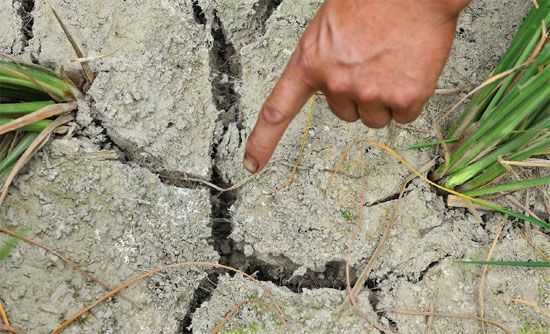Large animals create fertility for the land
It was the extinction of the giant animals in the Pleistocene that caused the scarcity of fertile arable lands in the world today.
According to the study of an expert group of the Institute of Environmental Change of the University of Oxford (UK), the Pleistocene - 11,700 years ago to 2,6 million years ago - was the period when the large herbivore populations Treating the planet instead of extinct dinosaurs.
These large herbivore populations live near rivers and lakes. They weigh over 44kg, play an important role in creating fertility for the lands away from where they live, through the elimination process of the body and decomposing the body after death.

Photo: ecns.cn
The results of the study are published in the August 11 issue of Nature Geoscience.
According to Chris Doughty, co-author of the study, large animals are like the nutrition blood vessels of the Earth, so if they become extinct, these blood clots are severed.
Because the majority of large animals have become extinct, the Earth has more arid areas.
Using mathematical models, Oxford researchers have predicted that the extinction of large herbivore populations has resulted in a 98% reduction in the release of important phosphorus for storage. the Amazon river basin, as in most other continents except Africa - the only continent in the course of evolution, modern humans live with large herbivore populations.
According to the team, the model used in the study will allow scientists to predict the effects of extinction of other animals in the world today.
This is a possible scenario for some of the large animals today, mainly in Africa and Asia.
Scientists also warn if the current large animals such as elephants disappear, will adversely affect farmlands.
- Decipher the greatness of cold native animals
- Wi-Fi reduces fertility in men
- To increase fertility in men
- Detection of 'stimulant' increases fertility
- Keep fertility for perennial crop land
- Guess the fertility of men through the right hand
- Strange hybrid animals
- The ability to test a man
- British scientists try to revive the pasture land
- Many animals from the South come to live in the Arctic
- How many animals are born around the world every day?
- The only person living in the dead land near Fukushima
 Why do potatoes have eyes?
Why do potatoes have eyes? 'Tragedy' the world's largest carnivorous life: Death becomes ... public toilet
'Tragedy' the world's largest carnivorous life: Death becomes ... public toilet Tomatoes were once considered 'poisonous' for 200 years
Tomatoes were once considered 'poisonous' for 200 years Detecting microscopic parasites on human face
Detecting microscopic parasites on human face